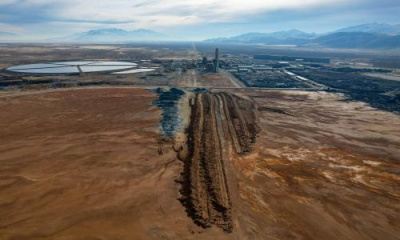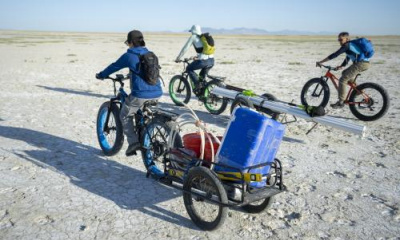Until the 20th century, the only way water left the Great Basin was through evaporation. Then, a giant city decided to take control of a river in a sleepy valley 200 miles away.
SALT LAKE CITY — Until the 20th century, the only way water left the Great Basin was through evaporation. Then, a giant city decided to take control of a river in a sleepy valley 200 miles away.
The saltwater lake, just like it's giant cousin in Utah, was deceptively alive; not with fish, but with migratory birds resting on their seasonal journeys to feed on brine shrimp and insects.
Kathy Bancroft is the tribal historic preservation officer for the Lone Pine Paiute Shoshone Tribe reservation. Her ancestors conformed their lifestyle to the limitations of the land.
"It was family oriented, you know, just no big tribes like that, because this land can't support huge amount of people," explained Bancroft.
In 1913, Owen's Lake was lost to the thirst of what would soon become America's second-largest metropolis: Los Angeles, which bought the water rights and diverted the Owen's River into a 230-mile long aqueduct. A system of pipes and canals built with the muscle of men and mules. The engineering marvel made modern day Los Angeles possible, but did so by creating an environmental disaster.
"It would block out the sun. It was like a really bad forest fire, that’s why we all have breathing problems. There’d be ashes falling in town from the fires and dust coming off the lake, and we’re in this narrow, deep valley so it takes the air a long time to clean up," Bancroft said.
The site of what was once Owen's Lake became the nation's largest source of dust pollution.
"The water, when it’s extracted from our area, we suffered terribly. So this used to be an agricultural paradise almost because the water would come out of the mountains," said Chris Langley, a film commissioner in Inyo County.
After the water was diverted, Owen's Lake became a magnet for Hollywood location scouts.
"[The lake] played Nimbus III in a Star Trek movie, which was the planet of interplanetary environmental destruction," said Langley.
Los Angeles took the water and left the dust until this century, when the courts ordered the Los Angeles Department of Water and Power to act. Today, Paul Liu manages the operation for the agency.
"We are the nation's largest dust mitigation program covering 48.6 square miles," Liu explained.
Mitigation is a checkerboard of four solutions at Owen's Lake, including the cheapest, called tillage.
"The way it works really is by creating a roughened surface. It doesn’t allow any specific particle of dust on the surface to create enough acceleration to come off of that surface," said Phil Kiddoo with the Great Basin Unified Air Pollution Control District.
In some places, the agency floods the surface with a shallow layer of water adjacent to vegetation providing habitat for birds. In other areas, they lay down gravel.
"It is probably our most expensive type of dust control coming in at $36 million a square mile, but done correctly and protected well, probably our least maintenance requiring dust control," Kiddoo said.
The process is complex and expensive, and requires constant monitoring. Even tillage costs half-a-million dollars per square mile.
Take the exposed lakebed in Farmington Bay with more square mileage than all of Owen's Lake. The potential problem for the Wasatch Front, a lake 19 times bigger, a population 140 times bigger. Simply put, saving the Great Salt Lake is the only way to avoid the choice between crippling costs and unbreathable air.
"I think that would be very sad because that’s a beautiful area, and it's very hard. If you're wearing a gas mask to experience that relationship with nature, it's sort of like you're almost at war with nature. And nature will win."
What's your response to At Water's Edge?
Does this reporting project make you feel hopeful? Concerned? Inspired? Surprised?
Selected responses will be used on social media, on our website or in our newsletter.








